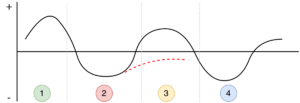Culture shock facts for kids
Culture shock is a feeling people get when they are in a very different and new place, like a new country or even a new city. It's like feeling confused or out of place because everything is unfamiliar. This feeling happens because it's hard to get used to new customs, languages, and ways of doing things. You might not know what is polite or what is expected. The idea of "culture shock" was first used in 1954 by a person named Kalervo Oberg.
Contents
What is Culture Shock?
Culture shock is a common experience for many people. It happens when you move to a place where the culture is very different from what you are used to. Imagine moving to a country where people eat different foods, speak a different language, and have different rules for how to act. This can make you feel lost or even a little sad.
Why Does Culture Shock Happen?
Culture shock happens because your brain is trying to understand a whole new set of rules. In your home culture, you know how to behave, what to say, and what to expect. In a new culture, these rules change.
- Language barriers: Not understanding the language can make simple tasks very hard.
- Different customs: Things like how people greet each other or how they eat can be very different.
- Food and daily life: Even simple things like shopping for groceries or finding your way around can be confusing.
- Social rules: You might not know how to make friends or what is considered polite in conversations.
Who Experiences Culture Shock?
Many different people can experience culture shock.
- Students studying abroad: Young people who go to another country for school often feel it.
- Travelers: People on long trips or vacations might feel it, especially in very different places.
- Immigrants: People who move to a new country permanently often go through culture shock.
- Exchange students: Teenagers living with a host family in a new country.
Stages of Culture Shock
Culture shock often happens in different stages. It's like a journey with ups and downs. Not everyone goes through every stage, and the order can be different for some.
The Honeymoon Stage
When you first arrive in a new place, everything might seem exciting and wonderful. This is called the honeymoon stage. You are curious about everything new. The food, sights, and sounds are all thrilling. You might feel very happy and excited about your new adventure. This stage can last for a few days or even a few weeks.
The Crisis or Negotiation Stage
After the initial excitement wears off, the difficulties of the new culture might start to feel overwhelming. This is often when true culture shock hits. You might feel confused, frustrated, or even angry. Small problems can feel much bigger. You might miss your home, family, and friends a lot. This stage can be tough, and it's when people often feel the most uncomfortable.
The Adjustment Stage
Slowly, you start to get used to the new culture. You begin to understand the language better and learn the local customs. Things that were once confusing become more normal. You might start to make new friends and feel more comfortable going about your daily life. You learn how to solve problems and adapt to new situations. This stage is about finding your way and feeling more at home.
The Adaptation or Mastery Stage
In this final stage, you feel much more comfortable and confident in the new culture. You can easily navigate daily life and understand the local ways. You might even start to enjoy the differences and appreciate the new culture. You can switch between your home culture and the new culture without much trouble. Some people might even feel like the new place is their second home.
Dealing with Culture Shock
It's important to remember that culture shock is a normal feeling. Many people experience it. Here are some tips to help you deal with it:
- Be patient with yourself: It takes time to adjust to a new place. Don't expect to feel perfectly at home right away.
- Learn the language: Even learning a few basic phrases can make a big difference.
- Stay open-minded: Try to understand why people do things differently instead of judging them.
- Connect with others: Make friends with local people or other newcomers. Share your feelings.
- Keep in touch with home: Talk to your family and friends from back home. This can help you feel less alone.
- Explore and try new things: Go out and discover your new surroundings. Try new foods or activities.
- Take care of yourself: Make sure you get enough sleep, eat well, and exercise.
Remember, culture shock is a temporary feeling. With time and effort, you can overcome it and enjoy your experience in a new culture.
Images for kids
-
Traveler from Australia visiting a small farm in Sierra Leone.
See also
 In Spanish: Choque cultural para niños
In Spanish: Choque cultural para niños



